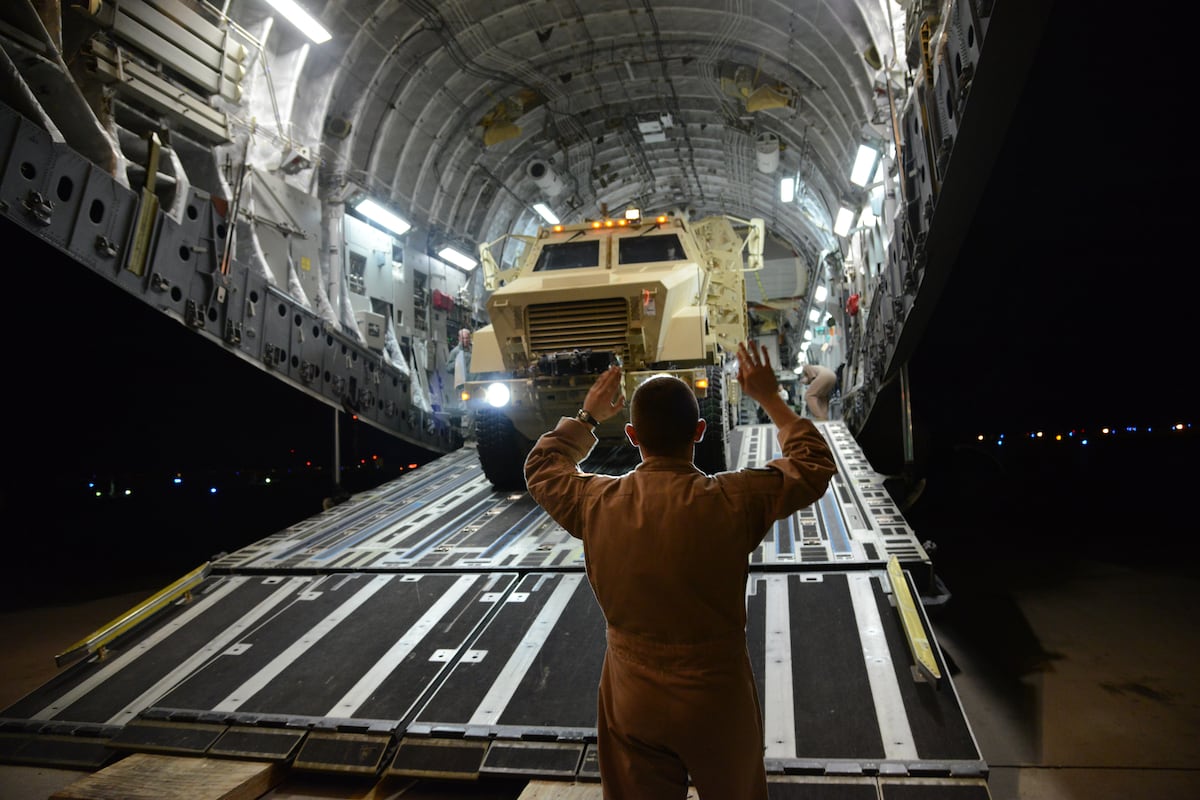ORLANDO, Fla.—When the Army introduces a new combat vehicle, like the $19 million M10 Bookers that began arriving earlier this year, its Test and Evaluation Command blows several of them up. The command’s leader wants to know whether simulations might replace at least some of those expensive real-world tests.
“With the M10 Booker, it’s one of the newest prototypes that we’re testing. We destroy a number of M10 Bookers. It’s very, very costly. Wouldn’t it be nice if we had accurate models and sims?” Maj. Gen. Patrick Gaydon said on Tuesday during a panel at Interservice/Industry Training, Simulation and Education Conference, or I/ITSEC. “I’m not saying we get rid of live-fire testing. But it was really interesting a couple weeks ago when I saw that live-fire where we predicted how high the vehicle would jump off the ground, how much something would bend. And we were very, very close, based on models and sims. That should allow us to do fewer live-fire testing [events].”
Gaydon suggested that future operational tests might combine modeling and simulation with live fire. For the M10, that could mean using a platoon for the live operational test and having the rest of the unit up to the brigade level use constructed environments through linked test centers, he said.
There’s also the safety angle. At Aberdeen Proving Grounds, the Army’s autonomous transport vehicle, which can be driven manually or unassisted, is being tested on tracks and through models and simulation.
“We’re learning safety issues, throwing things at it that we just couldn’t do in a live environment as many times as we can do in the model and sim,” Gaydon said.
For the Marine Corps, simulations for ground vehicle systems operators used to be considered a luxury or “nice to have” option that could be eliminated in favor of keeping program costs low, Lt. Gen. Benjamin Watson, who leads the Corps’ Training and Education Command, said during a keynote fireside on Tuesday.
“You could get away with that when you were talking about, you know, kind of old jeeps and five-ton trucks and things like that,” Watson said.
But that’s no longer true with the systems the Marine Corps is fielding, from the amphibious combat vehicle to the advanced reconnaissance vehicle, which is set to replace the older light armored vehicle.
“That ARV, I mean, it’s like an F-35 with wheels on the ground. It is a sensor platform, highly sophisticated, absolutely requires an integrated crew to operate. And if you just train the driver and then train the individual systems operators, you will never be able to maximize the opportunity of that platform,” Watson said. “We cannot just go out and do live force training to build proficiency…We might have been able to get away with that at some risk to force a long time ago, but we cannot afford that on any level right now.”
The need for solid simulators is compounded as services contend with recruiting and retention challenges and there’s less room to absorb the extra costs that come with destroying vehicles during training.
“As the vehicles have become much more exquisite and expensive, we [can’t] afford to lose the vehicles…because we can’t replace them, either fiscally or from a technical production standpoint, nearly as fast,” Watson said.
Few recruits have driving experience before they enlist, which improved simulations could help fix.
“I don’t know about you all, but the day I turned 16, I mean, I was standing in line with the DMV before they opened to get my driver’s license. Now, an awful lot of young men and women come into our armed forces without any driver experience, so things like that also play into the importance of investment here,” Watson said.
But those ground vehicle simulators should be more than just a video game with a steering wheel, said Army Brig. Gen. Christine Beeler, the program executive officer for simulation, training, and instrumentation. They need to mimic physical driving environments with realistic haptic feedback that troops can feel and respond to.
“One of the products in our portfolio is the [Medical Simulation Training Center, or] MSTC trainer, and that’s what helps our combat medics get certified in how to deal with an actual casualty,” Beeler said. “It’s got mannequins that bleed and talk to you. And [using] the system provides all of that adrenaline rush that really stimulates the soldier in more than just the cerebral way; it gets to emotion and all of those things,” she said. “We’ve got to be able to take advantage of that and stress the environment, so that…the worst thing a soldier or a commander faces is in training.”
Read the full article here







Leave a Reply